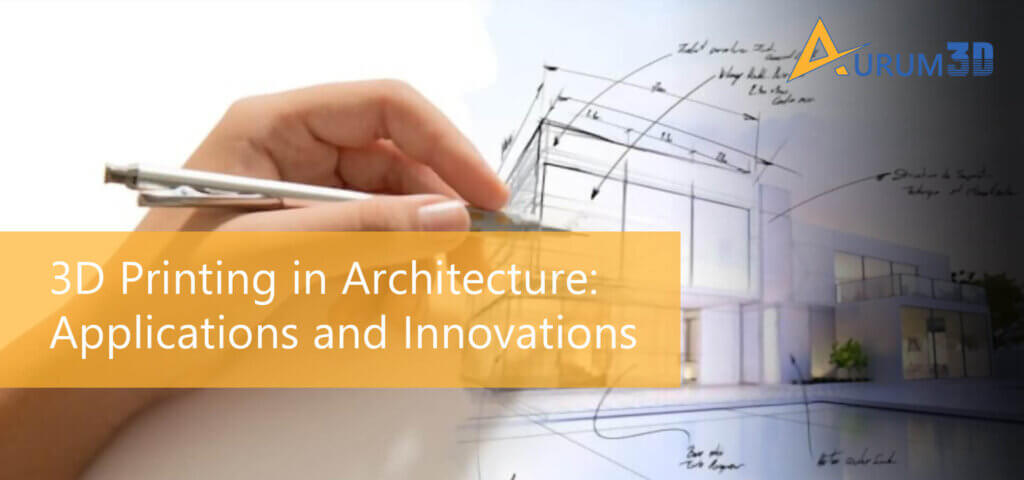Architecture is one of the industries that combine art and technology seamlessly. The amalgamation of art and technology enables architects to plan and design a wide variety of structures that keep onlookers mesmerized. But the technology trends driving the architecture industry change at regular intervals. 3D printing is currently one of the hottest technology trends in the architecture industries.
Most architectures leverage various 3D printing technologies to reduce the time and resources required to convert concept models into physical models. The leading architecture professionals and firms have started working on projects to save time, money, and resources by 3D-printing instead of constructing complex structures.
At the same time, the National Aeronautics and Space Administration (NASA) has been looking for advanced 3D printing construction systems to design and build roads, landing pads, and habitats on the moon and Mars. In addition to being applied widely by architectures, 3D printing in architecture has been evolving consistently.
8 Use Cases that Showcase the Significance of 3D Printing in Architecture
Converting Concept Models into Physical Models
The architects have to finetune the concept models regularly to meet the precise needs and instructions of a client. They have to make changes to the concept model regularly to showcase all important aspects of the model. Many architecture firms these days leverage 3D printing technologies to reduce the time and efforts required to convert a concept model into a physical model. The 3D-print the concept model to convey the look of the final structure in a realistic and accurate way. In addition to acting as a reference point, the 3D-printed models make it easier for the architects to incorporate the modifications suggested by the client.
Accelerating Interior Design
While designing and planning a building, the architect professionals have to allocate more time for interior design. They have to explore ways to create detailed parts and complex furnishings required and suggested by the client. The 3D printing technologies help architects to produce detailed parts and complex furnishings in several hours. Many architecture firms allow clients to choose from a slew of ready-to-print interior designs and finishes. They can 3D print the interior design selected by the client after doing customizations and enhancements without putting in extra resources.
Experimenting with New Ideas and Geometries
The 3D printing technologies enable architects and engineers to produce commercial and residential buildings physically in phases. Also, the architects are no longer required to assemble and build the structure. The speed and flexibility make it easier for architects to design modern structures with complex geometries. Also, the architects can easily experiment with new building locations where the 3D-printed building will be assembled. Many architecture firms already use 3D printers to print a single floor of an apartment building at a time.
Reducing Material Consumption and Wastage
While designing buildings, the architects have the option to use a variety of 3D printing technologies. They can use the appropriate 3D printing technology to create the structure using a variety of materials – metal, wood, concrete, and masonry. Also, they leverage 3D printing technologies to curtail construction costs by reducing both material consumption and wastage. Some architect firms already bring down the construction cost by 3D-printing structures using rice waste and raw earth. They further make the buildings eco-friendly by facilitating natural ventilation and thermal insulation without using expensive materials.
Enjoying Greater Freedom to Design
Each client these days wants architects to design a building that stands out from the crowd. The architects have to experiment with new ideas and designs to create exclusive models. At the same time, they have to explore ways to implement the exclusive models without increasing construction time and cost. Many architecture professionals use 3D printing technologies to experiment with forms and patterns without any restrictions. They evaluate and finetune the exclusive models by 3D-printing various versions of the concept model on demand. Also, the 3D printing technologies keep the exclusive models precise and realistic by eliminating human errors.
3D-Printing Structures End-to-End
A few architecture firms already use mobile 3D printers to 3D-print a small house starting from foundation to roof. But they still need to install windows, wiring, and plumbing by humans. More architecture firms will 3D-print small houses to curtail construction time and cost. But they will look for advanced 3D printers to 3D-print buildings instead of constructing buildings. Also, they will experiment with new ideas to build next-generation 3D printers that will produce structures with complex geometries precisely and quickly.
Developing Advanced 3D Printers
Many enterprises and government agencies have been carrying out research and development (R&D) activities to develop next-generation 3D printers for architecture. As mentioned earlier, NASA looks for advanced 3D printing construction systems that facilitate exploration of the moon and Mars in the future by facilitating the designing and construction of habitats without any human intervention. Likewise, many R&D projects also aim to design and build complex structures using large 3D printers. Hence, the architects will soon have the option to use many advanced 3D printing models that will facilitate the designing of commercial buildings and bridges in a few hours.
Facilitating Construction Automations
The leading architecture firms already deploy autonomous machines and custom robotic solutions to implement automation in construction. They can automate most aspects of a construction project by combining custom robotic solutions, artificial intelligence (AI) algorithms, and 3D printing technologies. The AI-driven robotic solutions will come with features and the capability to monitor the 3D printing process and identify issues. At the same time, 3D printers will reduce overall construction time and cost by producing internal walls, fixtures, and floorboards simultaneously.
3D printing technologies have been driving and transforming the architecture industry. Most architecture professionals and firms already use 3D printing technologies to curtail the time and resources required for planning and designing complex structures. But new use cases of 3D printing in architecture are being created regularly to leverage the full potential of this additive manufacturing technique.

